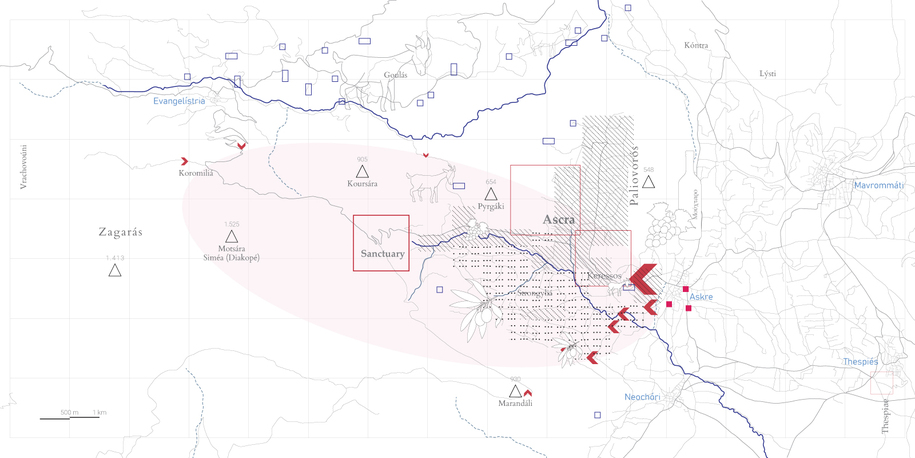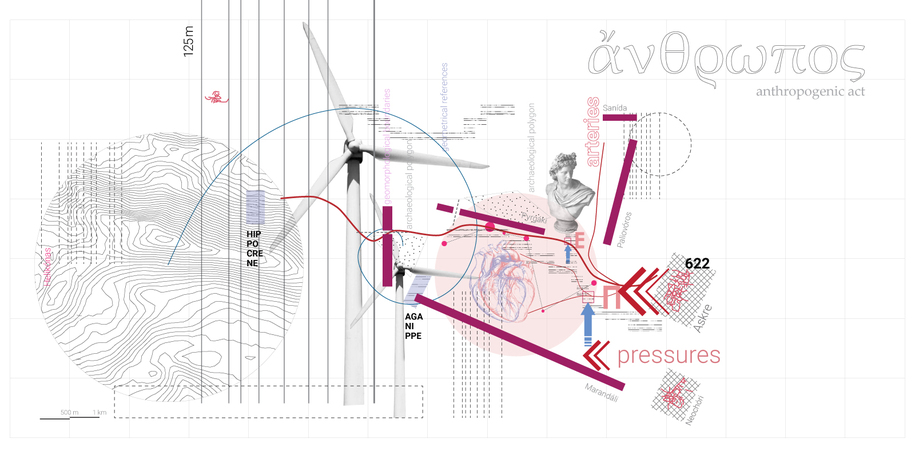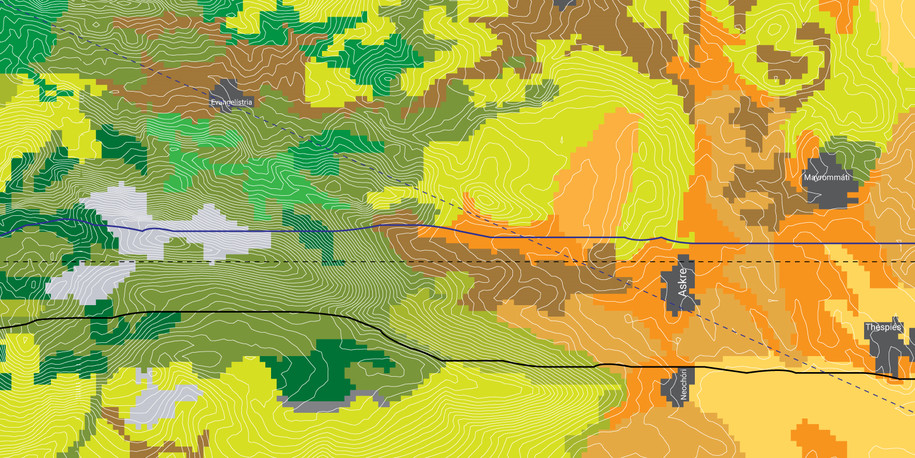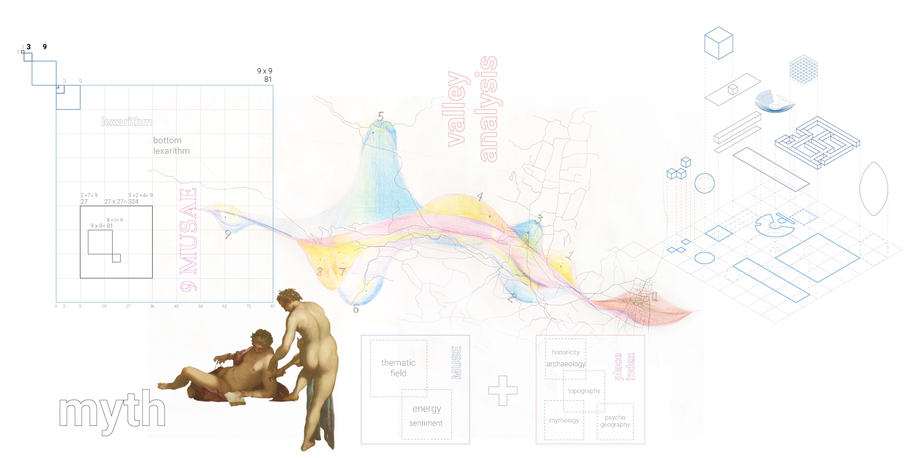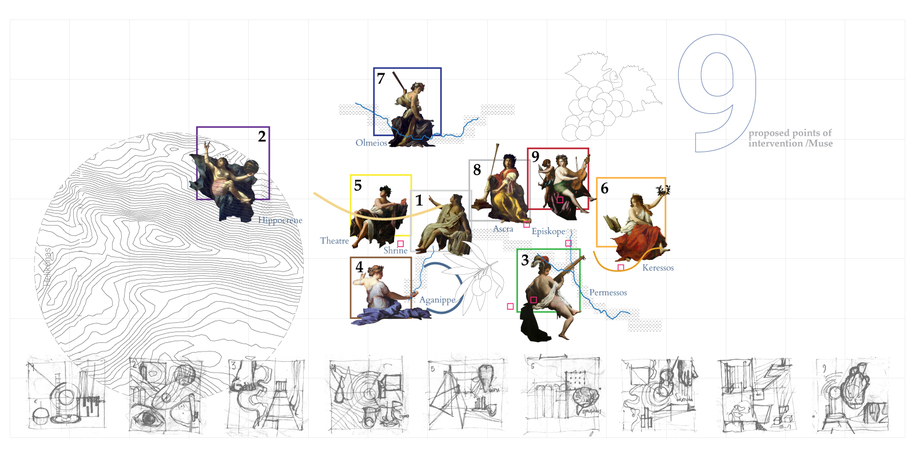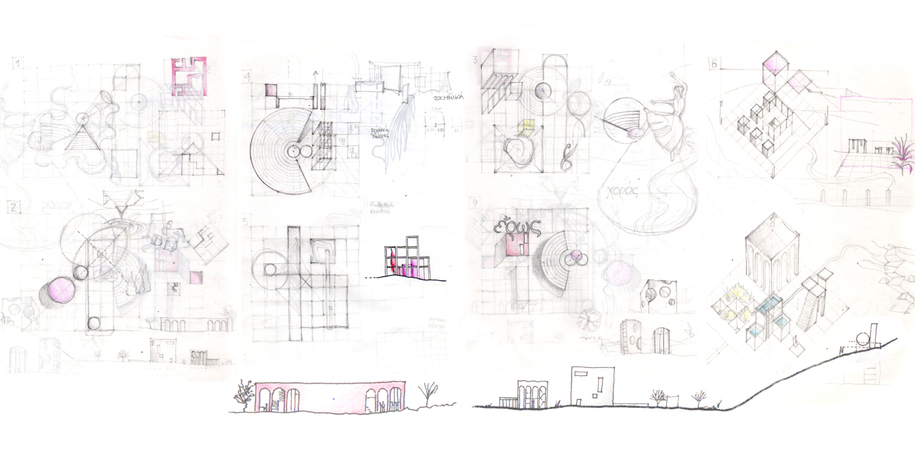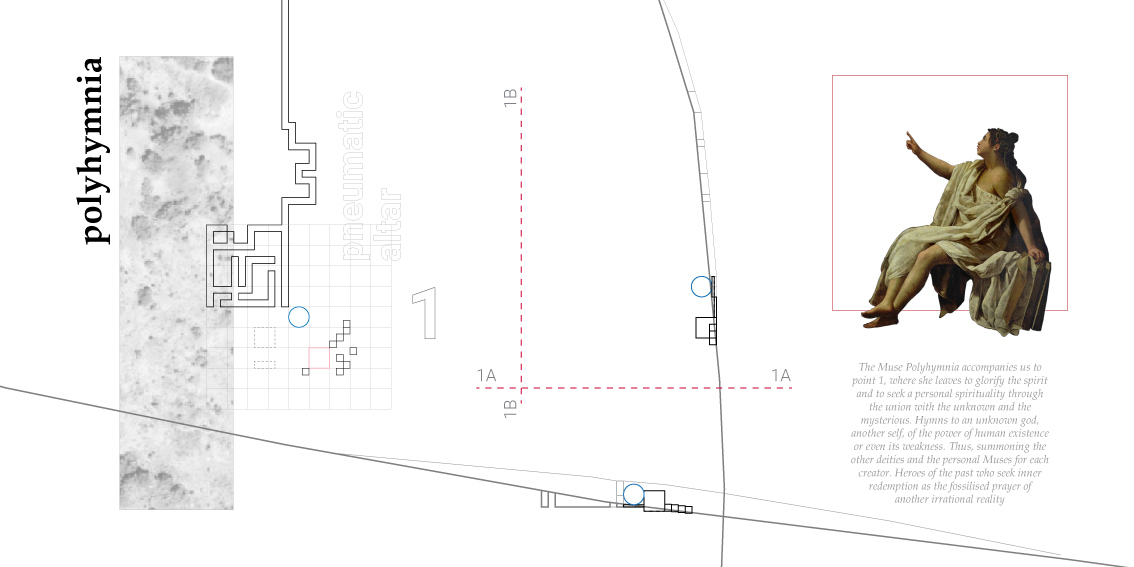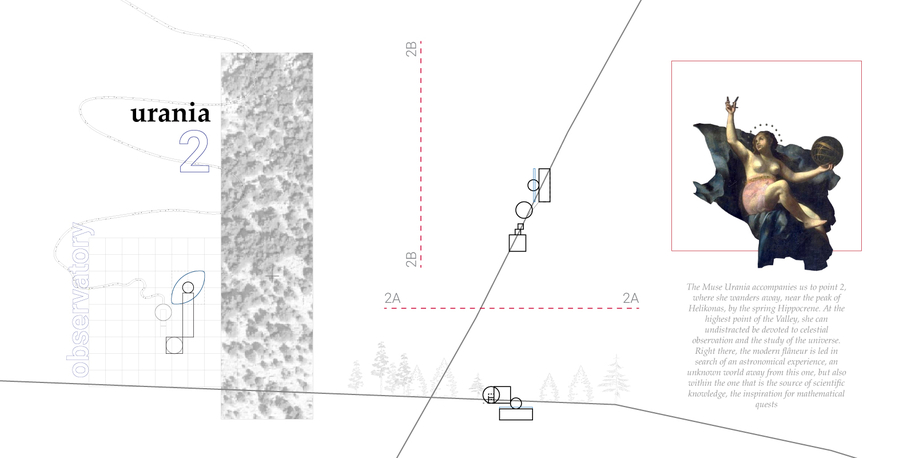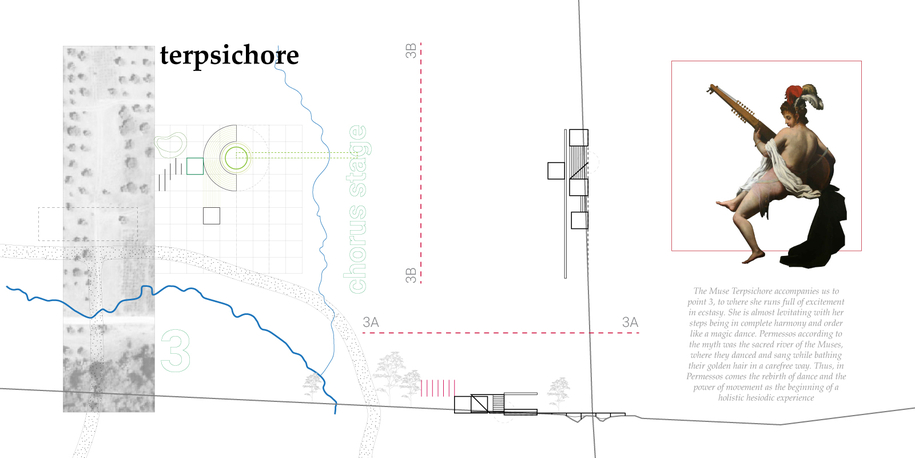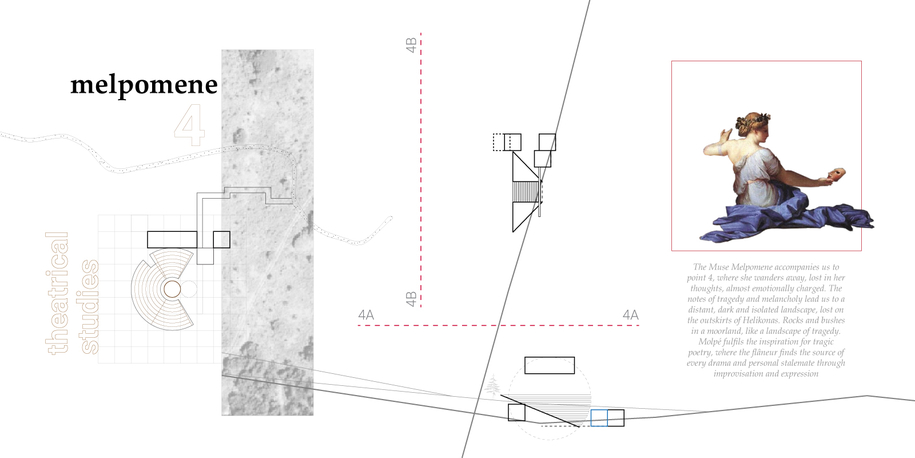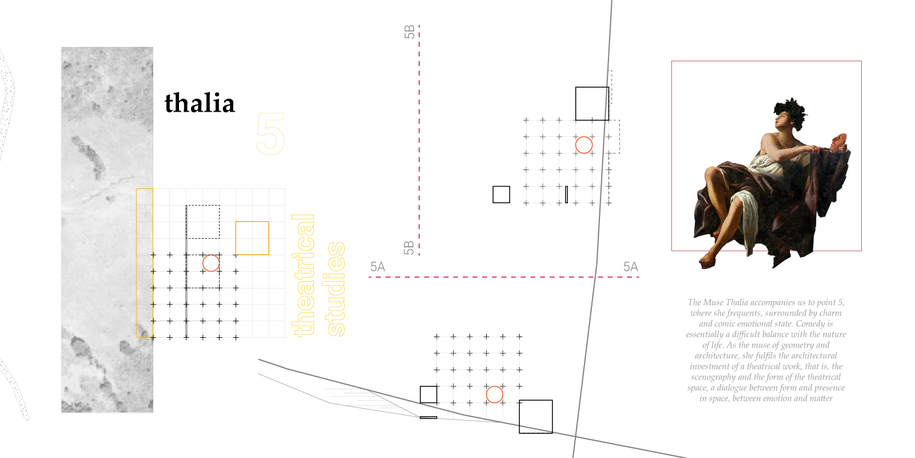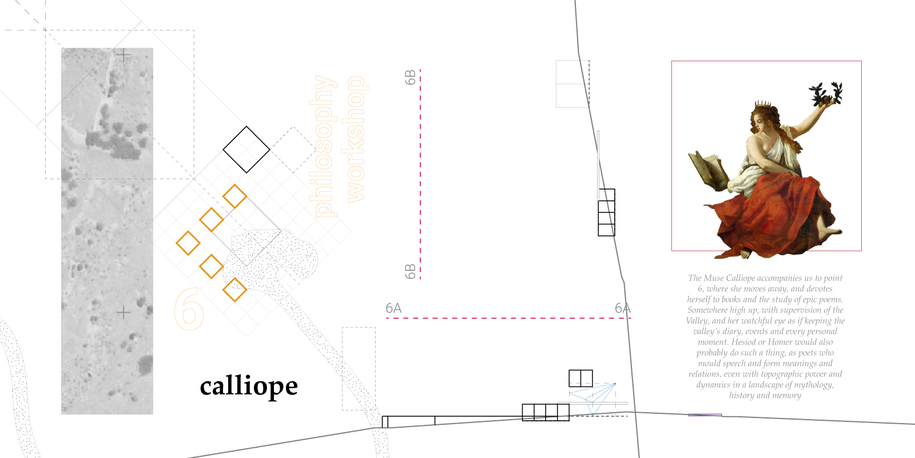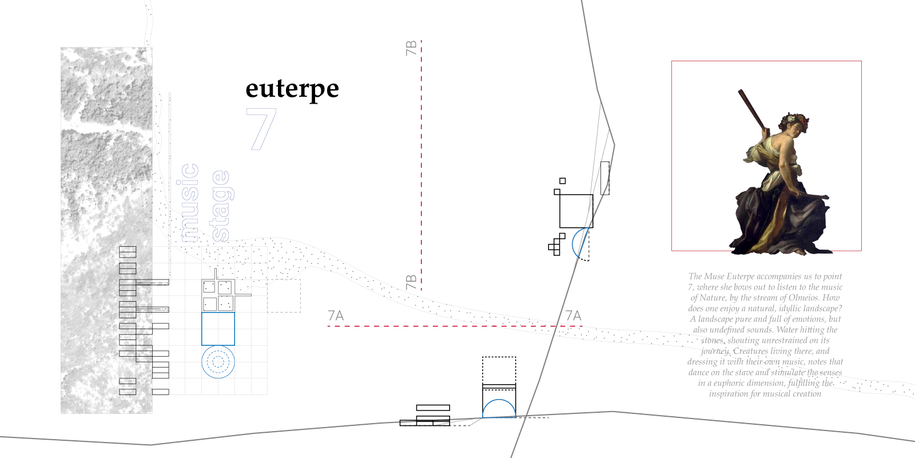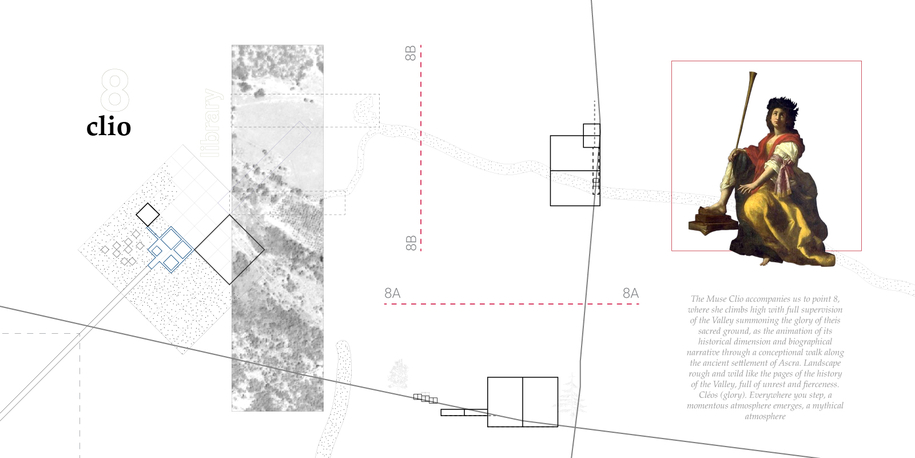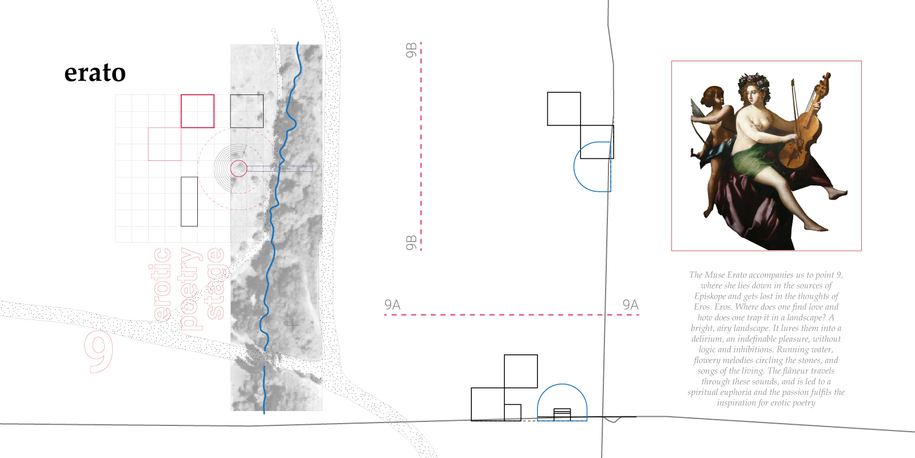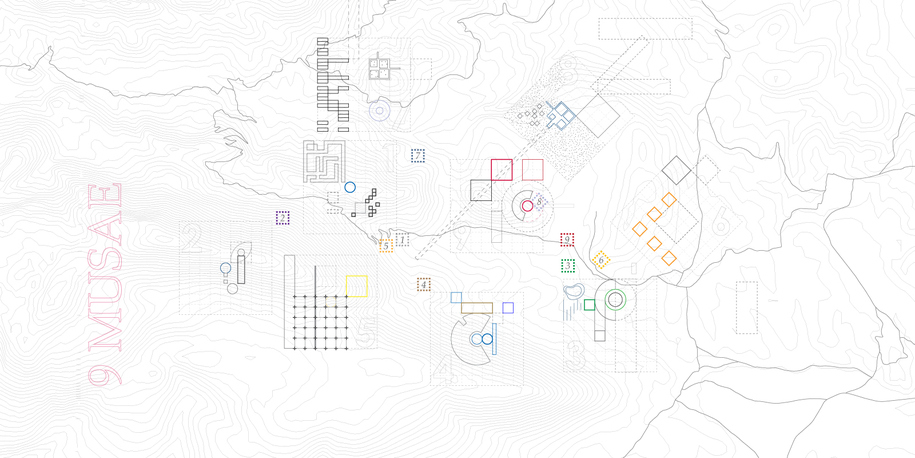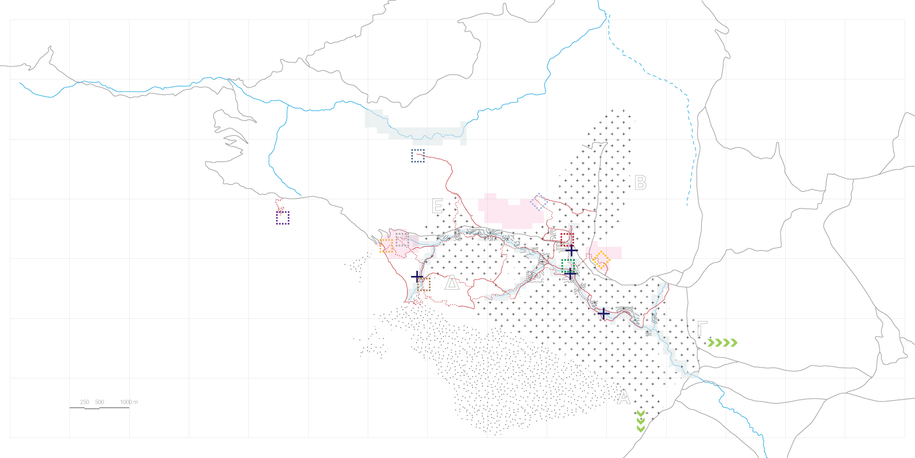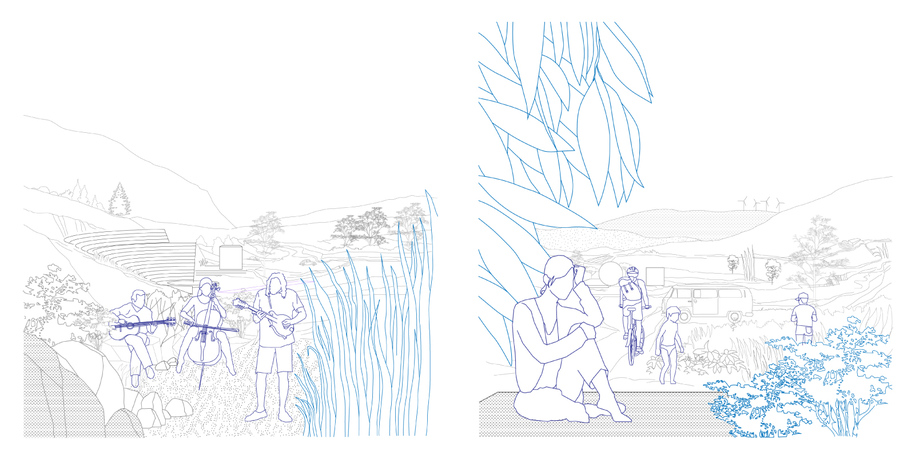This diploma thesis focuses on the Valley of Muses, a distinctive archaeological place with mythological dimensions on the outskirts of Helikonas, in Boeotia. The area is characterised by the existence of numerous archaeological elements, and is homeland of the ancient poet Hesiod, as well as according to the myth, land of the Nine Muses.
-text by the authors
The analysis methodology is structured based on the triptych: space –myth –proposal (idea). We investigate the character and qualities of the space that unlock a variety of interactions and relations between the factors of the valley. In this context, a mythological background emerges, which contributes to the methodology and consequently offers tensions for both the program structure and the implementation of specific architectural options.
The valley anatomy and development of a mapping ‘algorithm’ substantiate the concept of spirituality. In the end, the nine points of ‘presence’ for each Muse emerge through the map layering, that incorporates the nine interventions. In addition, the project is empowered with an emotional tone, almost a narrative of spatial and regional planning, with the map becoming an essential tool of approach and completion.
Objective is to showcase the entire valley, as an open–air experiential museum, with exhibitors and exhibits, of in situ creative act. In this mythological landscape, an amalgam of modern and ancient art will eventually be formed under the inspiration and guidance of the 9 Muses, as result of a Hesiodic experience of inspiration.
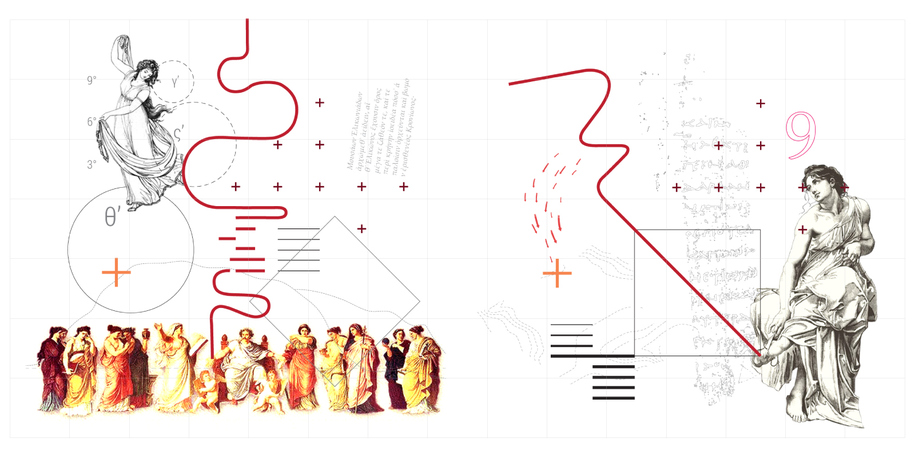
The basic programs of the spatial proposal, emerge from the myth of the 9 Helikonian Muses, who infuse elements for the pairing of each Muse with a certain place (our mapping algorithm). Thus, we employ architectural programs and uses that metaphorically appertain to the energy and thematic field of each Muse. For example, Polyhymnia (1) as the Muse of hymnal poetry refers to a spiritual, sacred program.
The 9 Muses, through the unfolding of the myth, ‘accompany’ us to 9 proposed points of intervention. In the course of experimentation with form and spatial composition, the 9 different sequences of volumes and structures appear through their mutual interaction and the ‘flow’ of solids on the grid. The strong archaeological dimension, however, leads us to a solution based on the integration and absorption of archaeological findings, both in form, program and placement.
The plan for intervention in the landscape of the valley is structured in two axes;
- the 9 individual interventions and
- the regulatory plan –masterplan
Due to the peculiarity of the Valley of the Muses, as an active archaeological site, which at the same time demonstrates intense agricultural activity, it is necessary to categorise and strategically plan land uses for the optimal management of the valley. By this strategy, not only the character of the individual places of the valley is protected, but also the orderly coexistence of its members is ensured, and at the same time, reconstitution of the members of the valley is attempted.
In the end, such a complex and multidimensional place emerges as a landscape of balance and spiritual inspiration, or even creative ecstasy for contemporary artists or even the simple seekers of their personal Muse.
Facts & Credits
Project title: Valley of the Muses: narrations of inspiration and creation
Student: Yannis Bessas
Presentation: July 2021
Supervisor: Vassilis Pappas
Institution: University of Patras, Department of Architecture
READ ALSO: Lefkada passages. Landscaping on the coastal northeastern front of Lefkada and restoration/reuse of the old TAOL winery | Diploma thesis by Alexandra Vasileiou, Katerina Voukelatou
